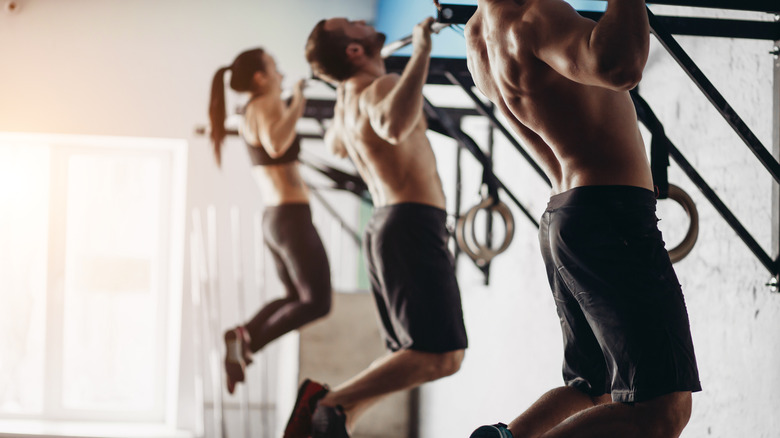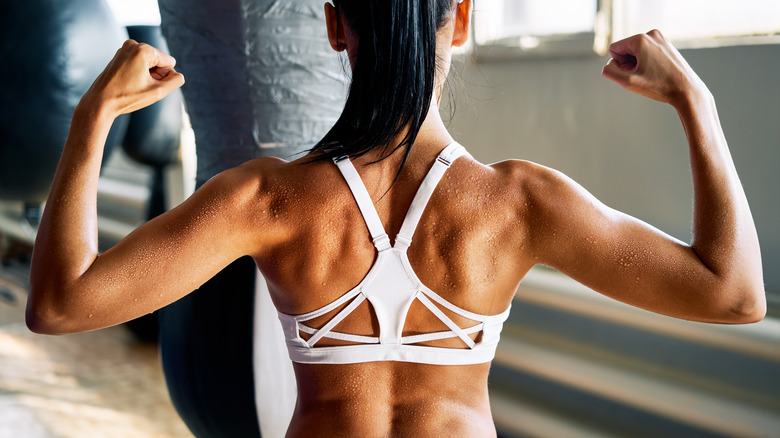What Pull-Ups Really Do For Your Body
Pull-ups, while very challenging, are one of the most effective upper body strength exercises you can perform without using weights. Practicing pull-ups regularly provides benefits beyond body sculpting. According to Healthline, incorporating movements like pull-ups into your fitness regimen might improve your overall health by lowering blood pressure, minimizing back pain, and reducing visceral fat. Furthermore, strength training has been shown to improve mental health by decreasing anxiety, reducing depression, and improving cognitive function and self-esteem.
A pull-up is an exercise that works multiple muscles at the same time (compound movement) and by including them into your fitness routine, you can minimize the length of your workout. Another perk: pull-ups are a body weight exercise and can be done without a gym membership or fancy equipment, requiring only a high platform to hang on and pull yourself up from.
Pull-ups work multiple muscles in the body, including the back, specifically; latissimus dorsi (lats), trapezius (traps), thoracic erector spinae, and the infraspinatus, which is located on the shoulder blade. Being a multi-joint movement, pull-ups also hit the biceps, forearms, triceps, and core (via Men's Journal).
Pull-ups are difficult, but that shouldn't stop you
Pull-ups are not easy to do, mainly because of the level of difficulty and the strength required to perform the move properly. If you have never done a pull-up, chances are you will need to start with modified or assisted versions of the movement, which is a good start for beginners, and still provides a killer upper body workout.
Sometimes chin-ups are confused with pull-ups, and while a similar movement, there is one big difference. The way you grip the bar determines which muscles are activated, says physical therapist Andy Sobuta, official teaching partner of the Harvard Medical School Department of Physical Medicine and Rehabilitation (via Business Insider). A pull-up requires a palm grip facing away from your body while a chin-up requires a palm grip facing towards it. Chin-ups are thought to be a bit easier to perform, as they put your arms in a more natural position, while activating the biceps and pectorals more than a pull-up does.
The benefits of adding pull-ups into your exercise routine appear to outweigh the fear of trying them, as challenging as they may seem. And remember, as you begin building strength and improving your overall well-being, you will also be toning and shaping your back, which is shown off in tank tops, bikinis ... or when wearing nothing at all.


